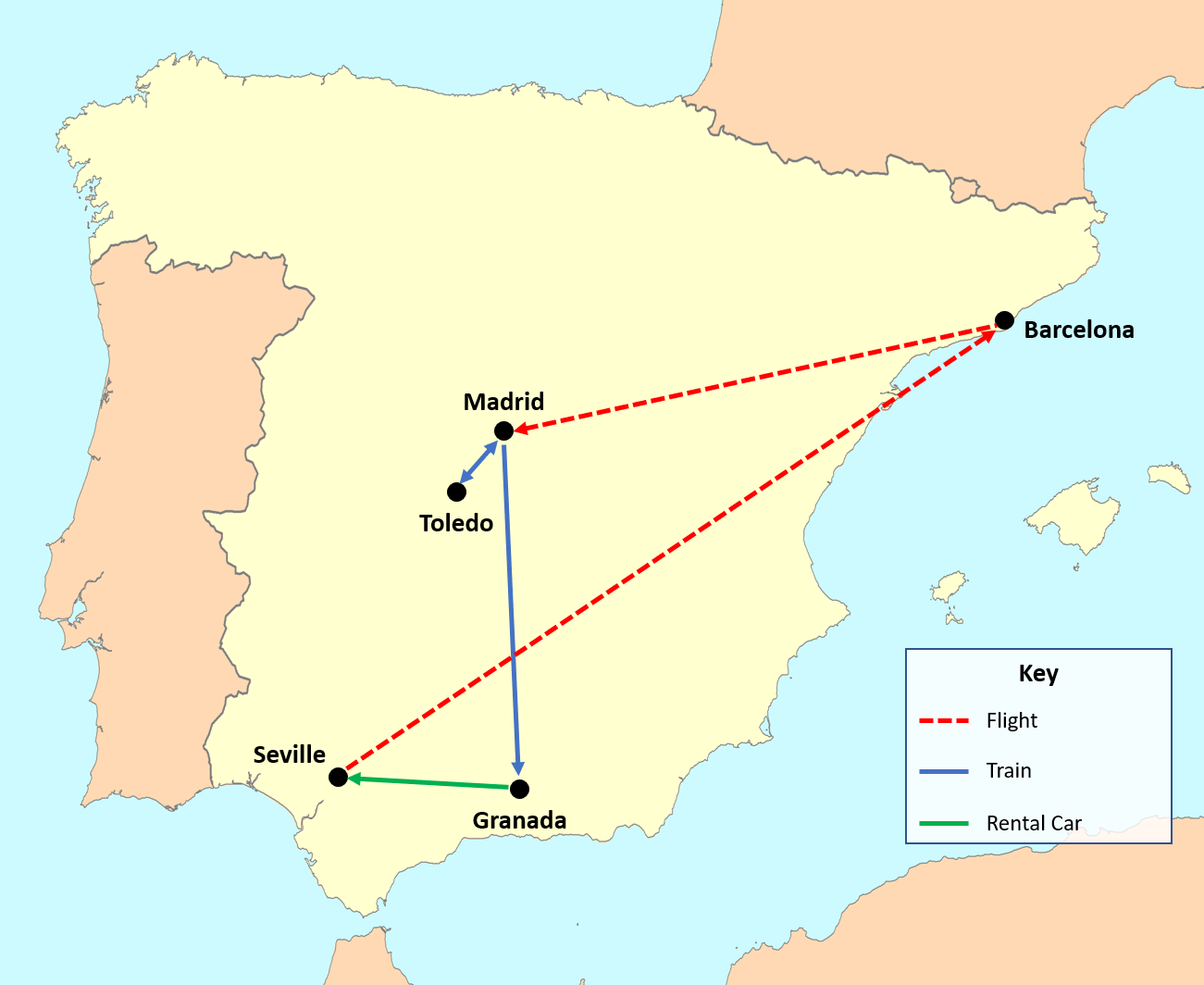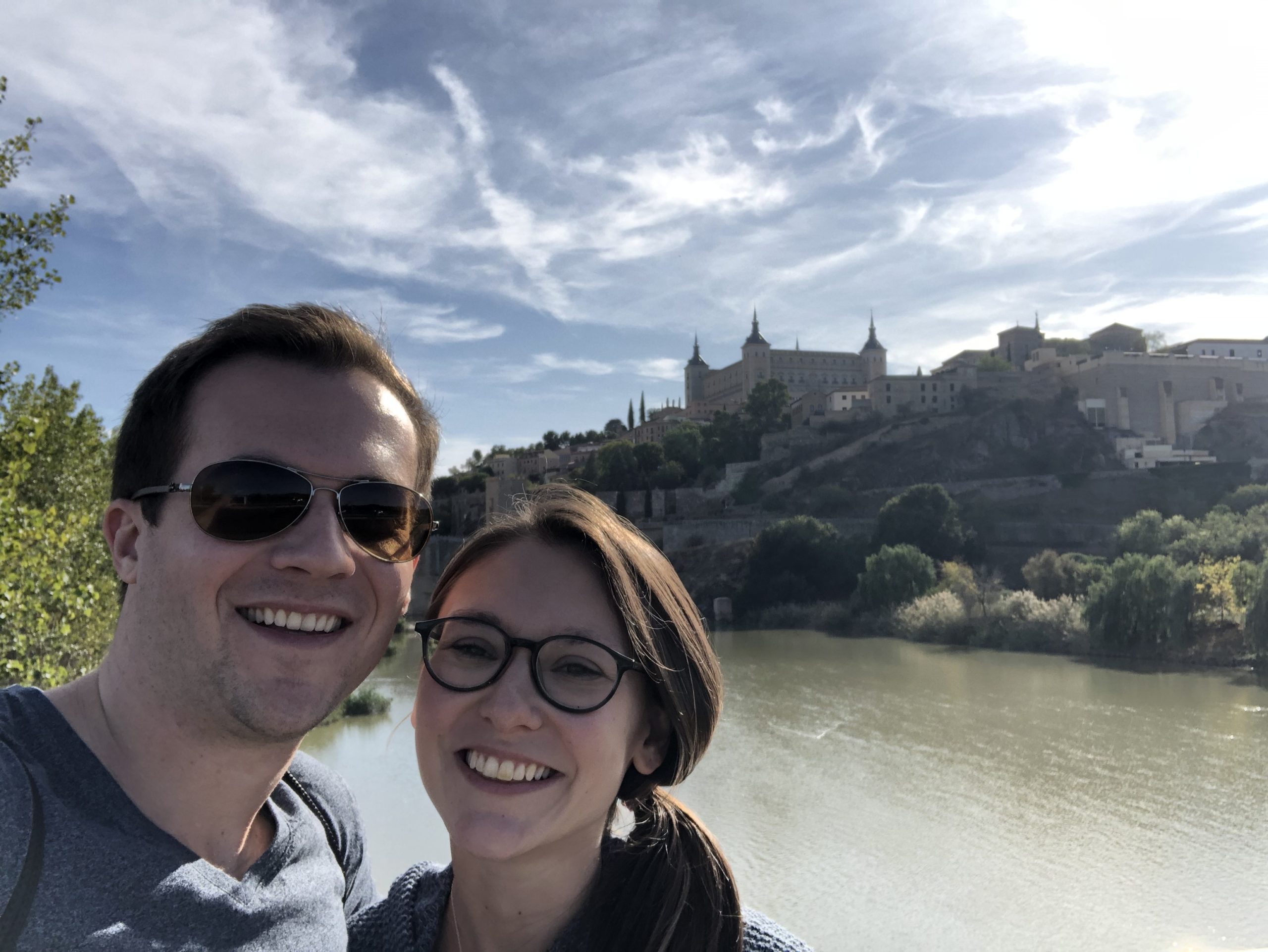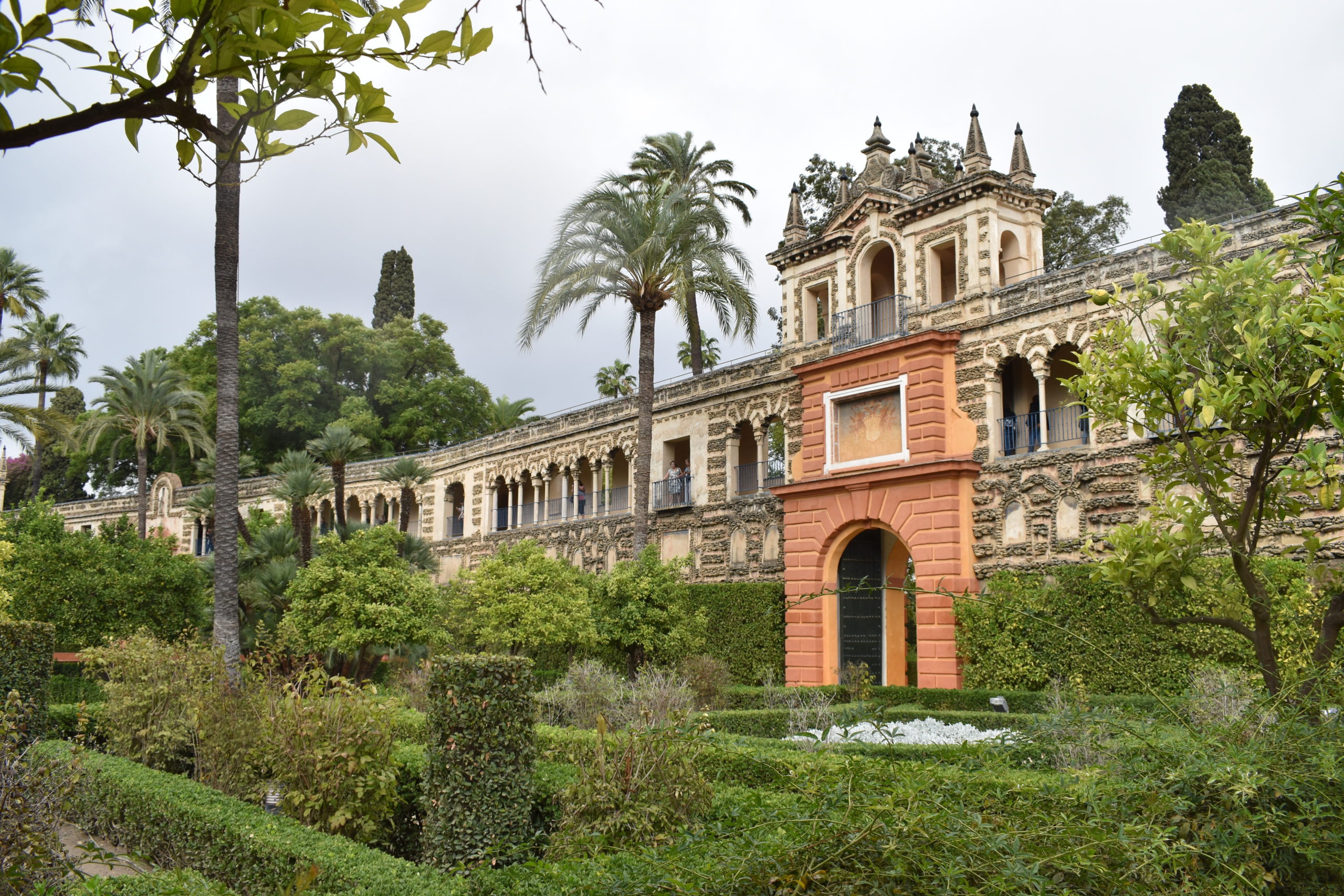Because Spain has so much to offer, it can be difficult deciding where to spend your time. For our October trip, we opted to avoid the beach and focus on visiting historic cities due to the cooler weather. This itinerary details our path and offers some tips for your trip.

Itinerary
- Day 1: Madrid
- Day 2: Madrid
- Day 3: Madrid to Toledo (day trip) to Madrid
- Day 4: Madrid to Granada
- Day 5: Granada to Seville
- Day 6: Seville
- Day 7: Seville to Barcelona
- Day 8: Barcelona
- Day 9: Barcelona
- Day 10: Barcelona to Madrid
All in all, we thought this itinerary gave us almost the perfect amount of time in each city. The only thing we might change is substituting one day in Madrid for one day in Seville. We flew round trip through Madrid to save some money, but we definitely recommend looking into multi-city flights to see if you can easily fly straight from Barcelona to your home destination.
Getting Around
Planes, trains, and automobiles.
In terms of transportation, we definitely think trains are the way to go if that option exists. Even if the schedule says the journey takes a bit longer than a flight, you’ll probably save time and money by avoiding the hassle of getting to and from the airport. Since Barcelona was out of our way, though, we had to book flights through that destination.
Renting and driving a car in Spain was surprisingly easy. It also gave us some more flexibility on timing and let us enjoy the scenic countryside! The only thing to note is that rental car stations are sometimes outside the city, so you may have to take a train or rideshare to get to your pickup spot.
Recommendations for Each City
If you’re looking for food and activity recommendations for each city we visited (along with some city-specific tips and tricks), check out our posts linked below.
Tips & Tricks
- Money: Spain is not a cheap destination, so make sure you’re prepared to spend if you want to eat out and enjoy the main tourist attractions. The good news is that almost everywhere takes credit card, so you won’t need a ton of cash on hand. Make sure you have some just in case, but we were able to use our card at most restaurants and sites.
- Public Transportation: The availability of buses and trains depends on the city you visit, but all in all we found public transportation to be very simple and accessible throughout Spain. One thing to note is that stops are harder to come by when you’re walking through the narrow, winding streets of a city’s old town, so you’re best off going by foot for those parts of your days. If you ever need to get somewhere outside the scope of public transit, Uber is available as well.
- Language Barrier: There is a bit of a language barrier in Spain, as some restaurants we visited didn’t really speak English. For the most part, though, you can get around without knowing Spanish if need be. It would still be beneficial to get familiar with the basics (i.e., numbers, greetings, how to order sangria) before you go.
- Eating Schedule: The siesta is real. Most restaurants in Spain close for a few hours in the afternoon and evening between lunch and dinner, so you’ll need to plan accordingly. Note that people in Spain tend to eat dinner late, so restaurants generally won’t reopen until 8:00pm.
- Reservations: Spain is an incredibly popular travel destination, so you’ll likely run into your fair share of crowds. This also means that the bigger attractions book out in advance. Do yourself a favor and make reservations for everything as early as possible. You can always modify them if need be, and you’ll be happy when you’re not scrambling at the last minute.
Happy traveling!
Kitrina & Jordan

